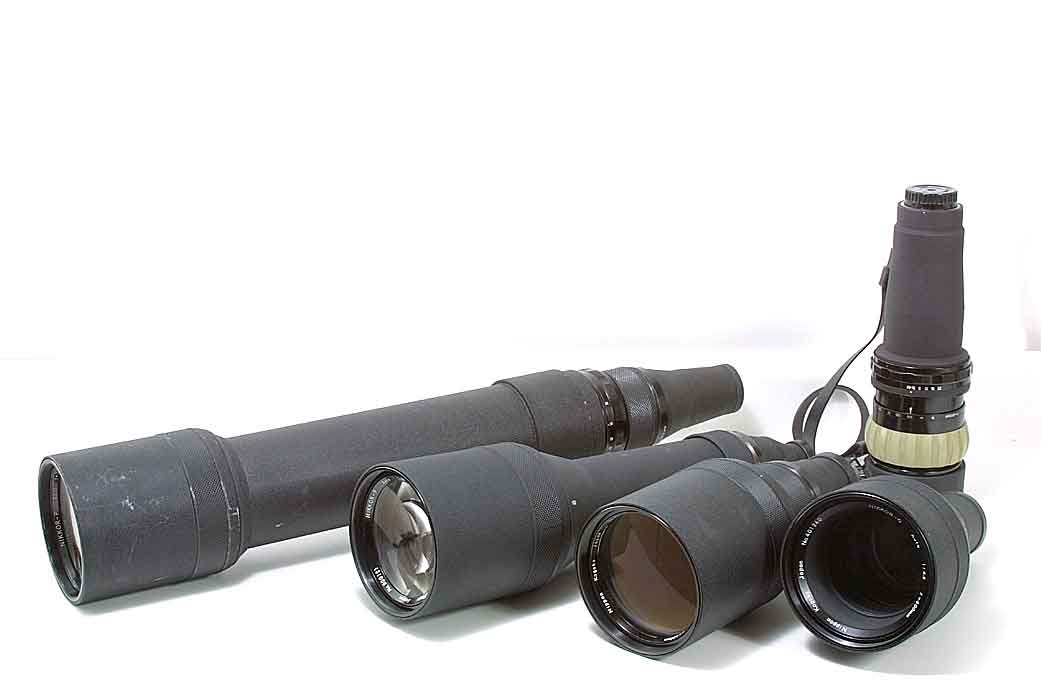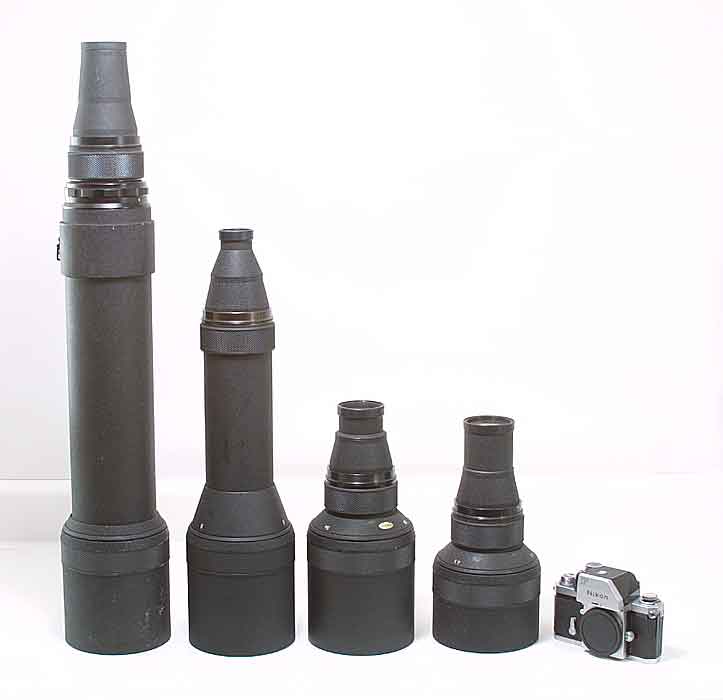
Photographica Pages
An online guide to collectable cameras and related stuff
400/4.5, 600/5.6, 800/8 and 1200/11
Nikon Nikkors
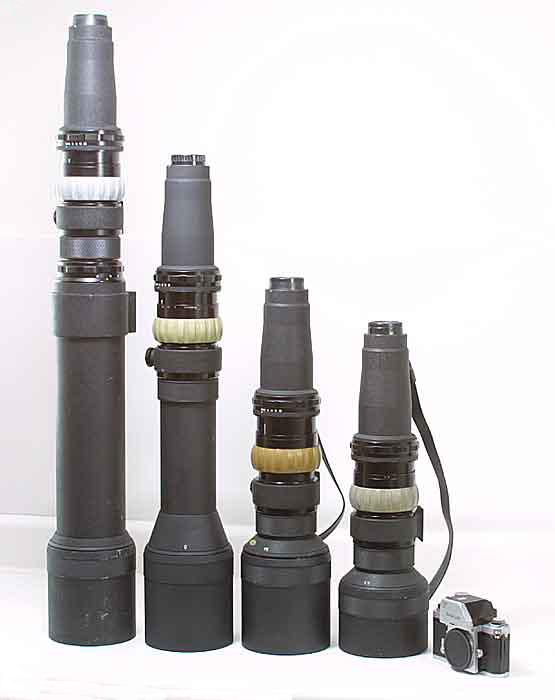

One of the drawbacks of early long focal length lenses is their physical length. As time went by, new glasses and designs allowed the physical length to be drastically reduced. Carrying one of these behemoth lenses was difficult enough. Imagine trying to pack two, much less four of them!
As the optical design for most telephoto lenses had a cluster of elements at the far end of the lens, it became apparent to the designers at Nippon Kogaku that the center part of the lens could be shared by all four lens heads, saving both weight and cost.
And so, in 1964 Nippon Kogaku introduced the 400, 600, 800 and 1200mm lenses. All of them shared the same tube, which included the focusing helical and aperture assembly. This tube was called "Focusing Unit". The original unit was replaced in Nikonís line-up by the AU-1.
One design flaw is that when the lens is mounted onto a tripod, the weight of the lens causes stress on the tube, which makes the focusing very stiff. To relieve this stress, Nippon Kogaku introduced an arm to support the lens from the ends. It was cataloged as the "Cradle Grip".
In spite of the economy in weight and cost, these were still big, expensive lenses. As a result, few were built, and most were used professionally. As they were awkward to handle, very few are in really nice cosmetic condition today.
If you ordered a single lens with focusing unit, it was sold in a wooden case. The 400 and 600mm lenses were the same physical length and share the same size box. The 800 and 1200mm lenses each have a dedicated box.
The lenses were introduced around the same time as the 1964 Olympic Games in Tokyo and as a result are sometimes referred to as the Olympic Nikkors. Nikon also built a late batch of S3 rangefinder cameras in black, which are referred to as "Olympic", as well as a special redesigned 50/1.4 rangefinder lens, also known as "Olympic". The lenses were listed in an April 1964 price list, but production did not actually begin until August.
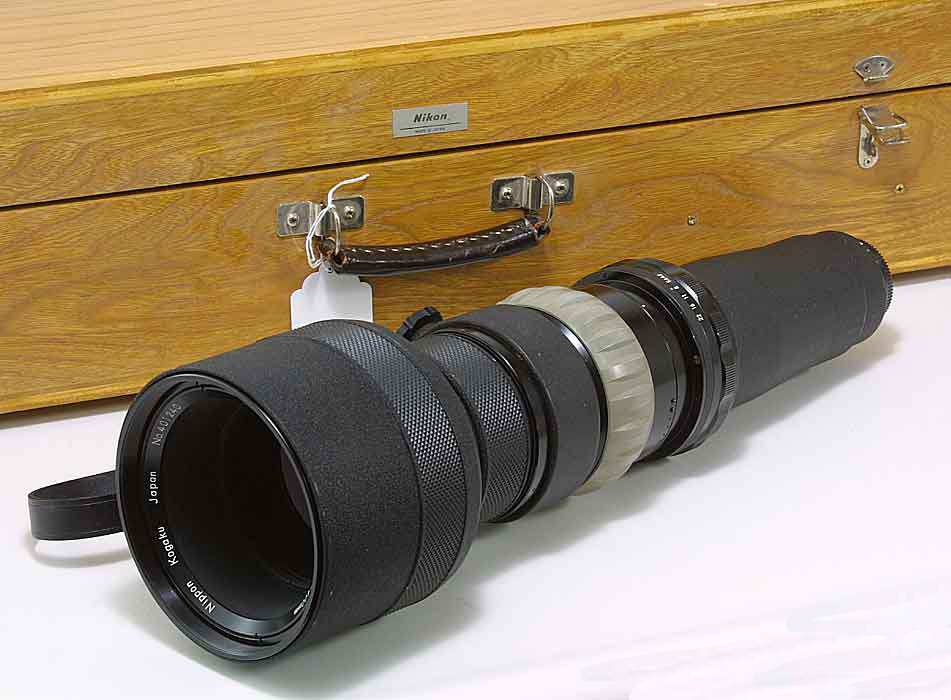
The 400/4.5 Nikkor, with it's wooden box.
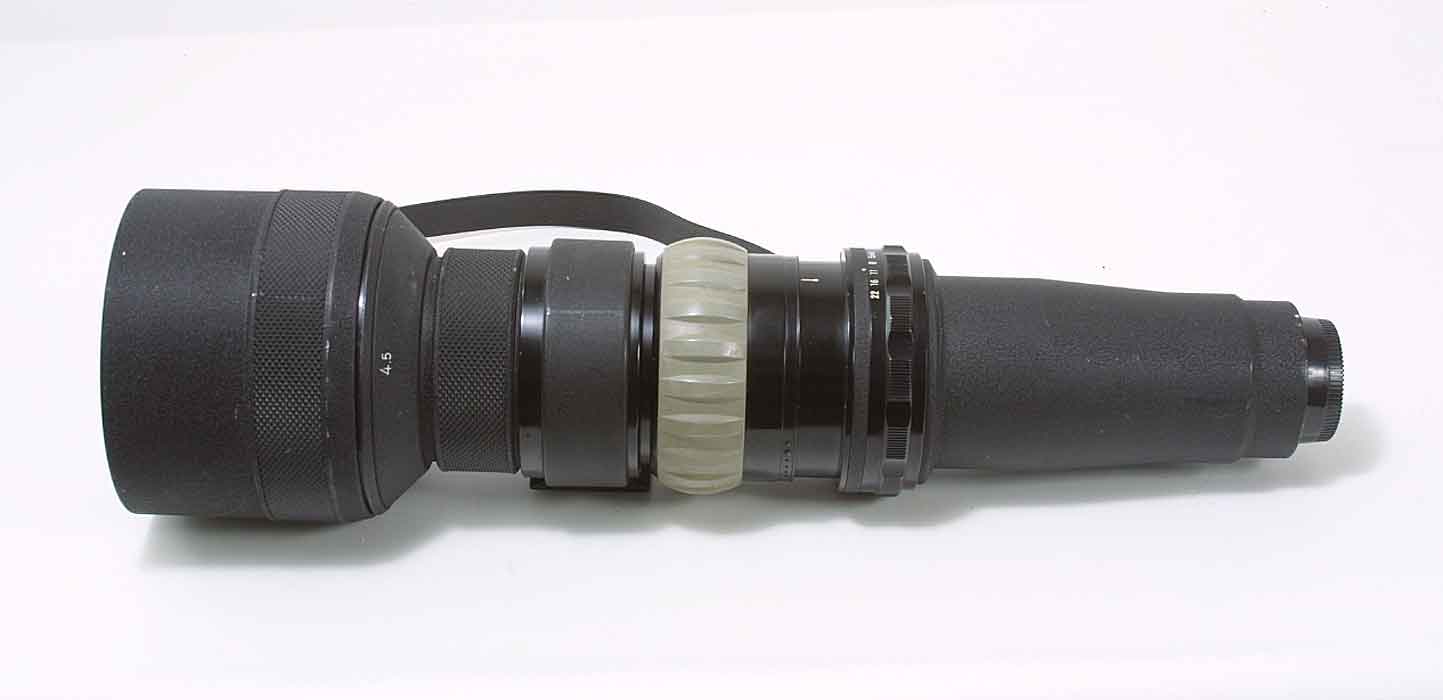

The 400mm lens was four elements in four groups. Serial numbers started at
400111. In 1972 the lens was no longer marked "Nippon Kogaku", but
rather "Nikon".
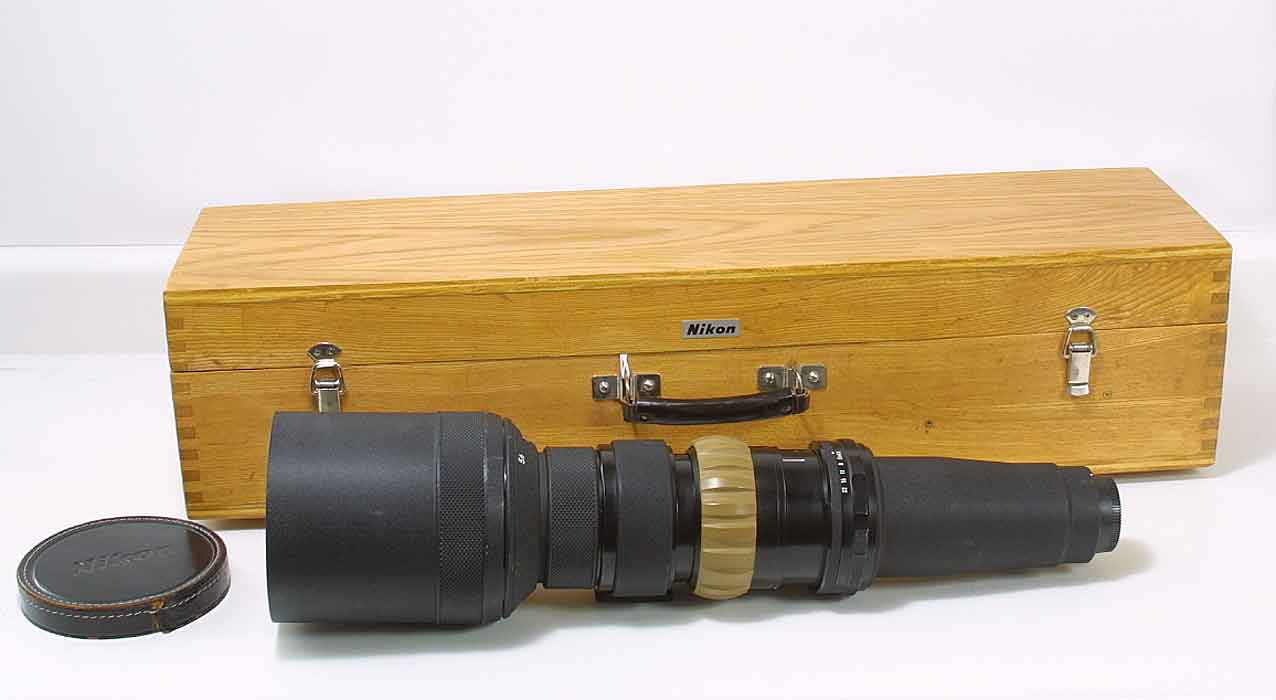
The 600/5.6 Nikkor, with it's wooden box.
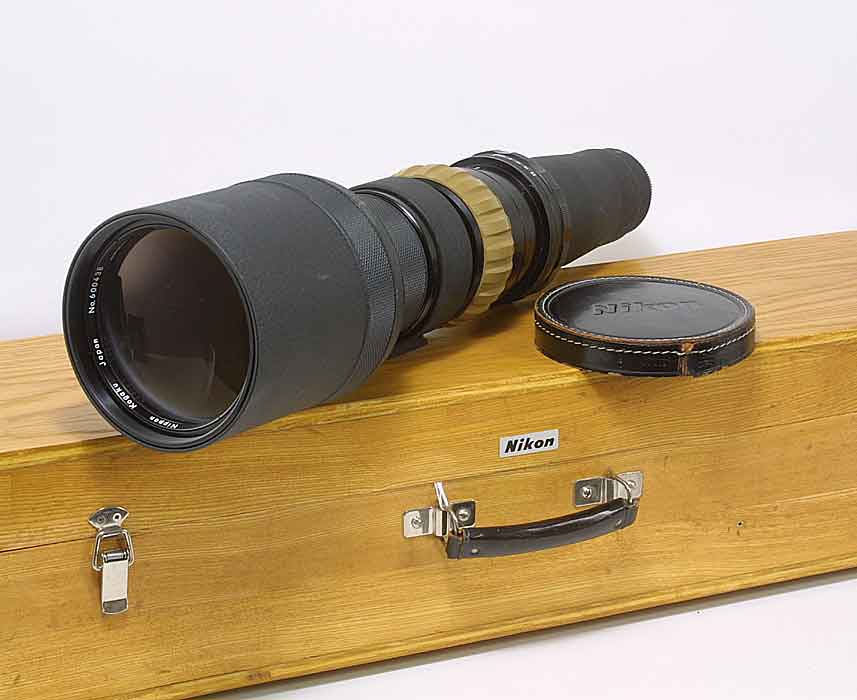
The 600mm lens was five elements in four groups. Serial numbers started at
600111. In 1972 the lens was no longer marked "Nippon Kogaku", but
rather "Nikon".
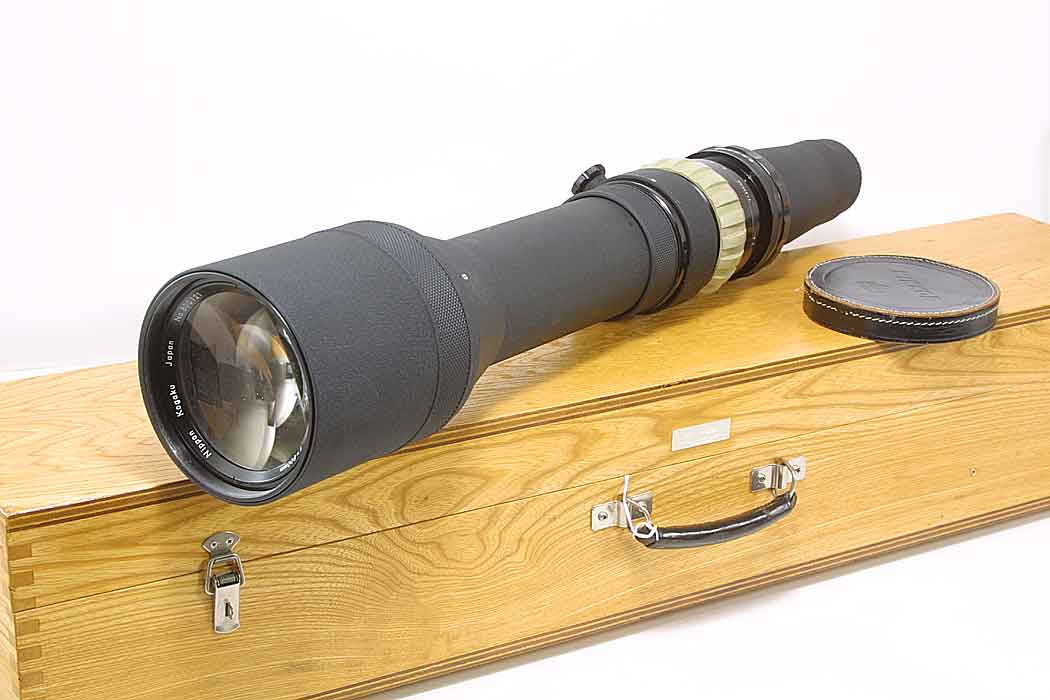
The 800/8 Nikkor, with it's wooden box.
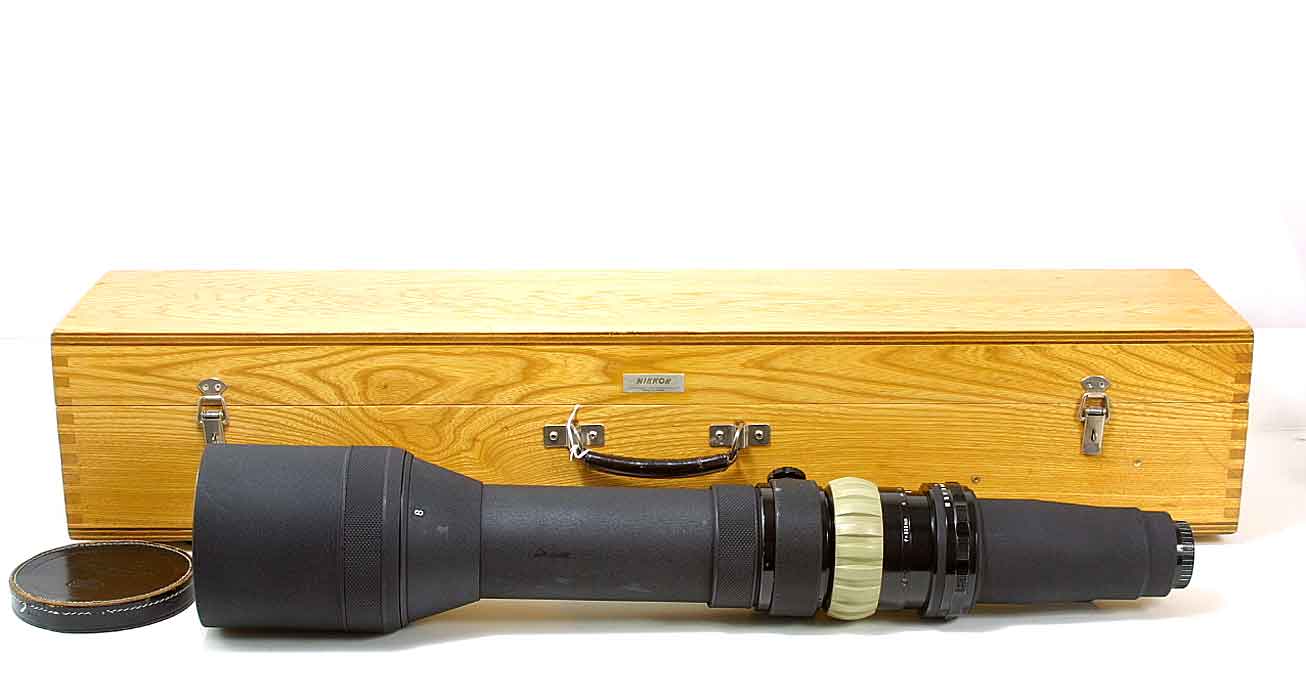
The 800mm lens was five elements in five groups. Serial numbers started at
800111. The design of the rear of the lens was changed somewhere between 800202
and 800278, enlarging the rear element. In 1972 the lens was no longer marked
"Nippon Kogaku", but rather "Nikon".
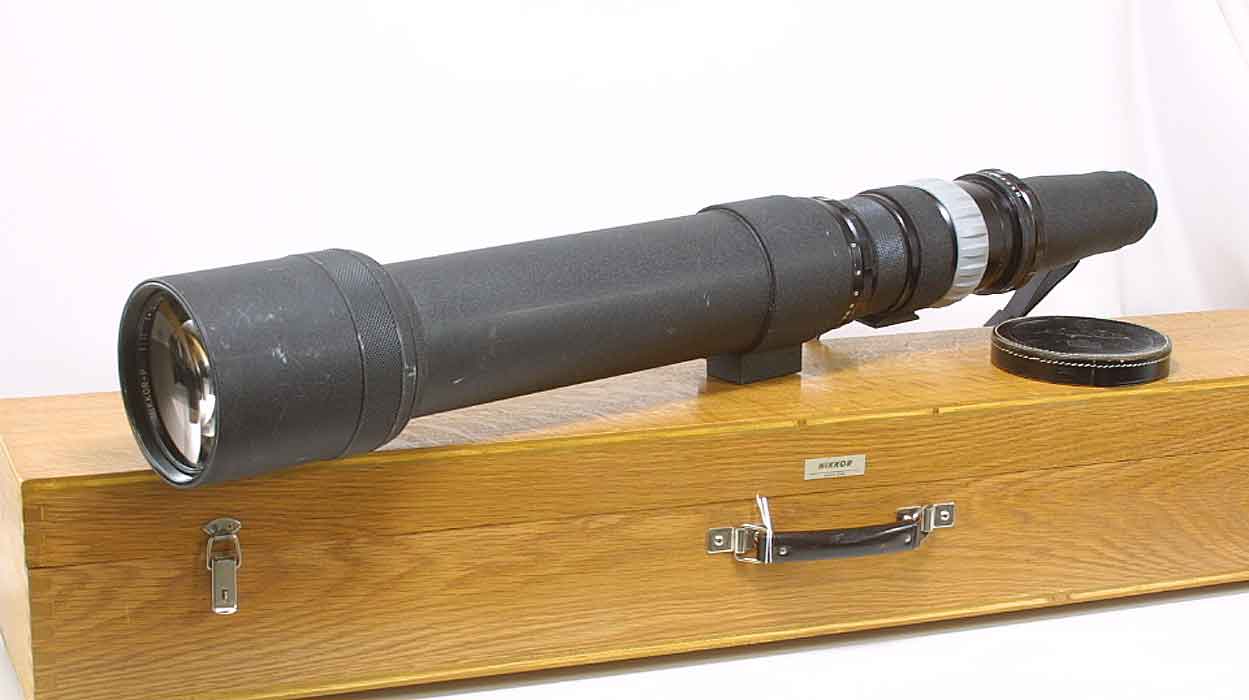
The 1200/11 Nikkor, with it's wooden box.
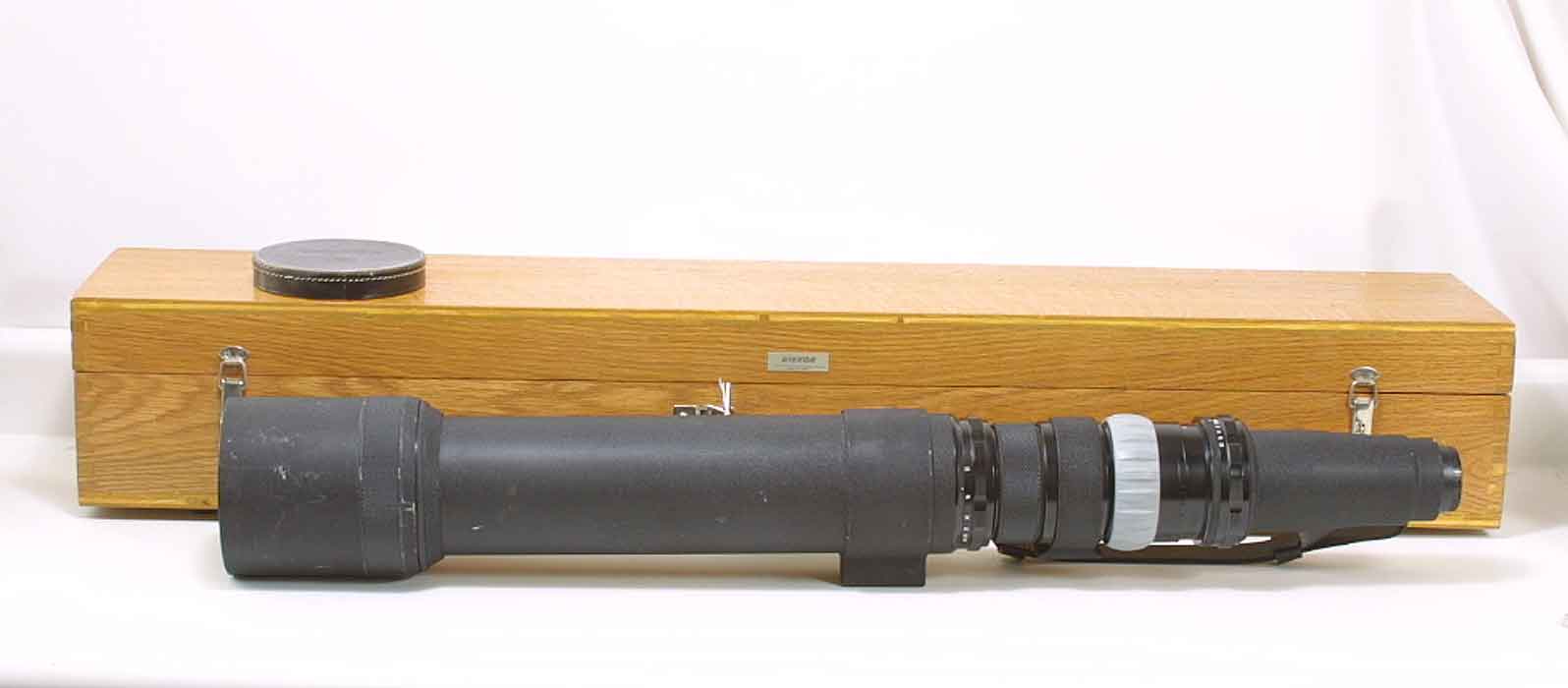
The 1200mm lens was five elements in five groups. Serial numbers started at
120011. The design of the rear of the lens was changed somewhere before 120082,
enlarging the rear element. In 1972 the lens was no longer marked "Nippon
Kogaku", but rather "Nikon".
